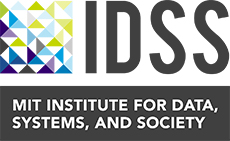Controlling the spread of flu
IDSS PIs: Richard Larson, Stan Finkelstein
Collaborators: Anna Teytelman (MIT), Karima Nigmatulina (MIT)
Researchers examined the best ways to reduce the likelihood that individuals and groups will become infected with the flu, both by diligent use of non-pharmaceutical interventions and by effective deployments of vaccine. The research suggests that up to 5 million Americans who became ill with H1N1 flu in 2009 might not have become infected if an alternative, more adaptive vaccine allocation plan had been in effect—and provides the essentials for such a plan.
This research used a service-systems framing and mathematical modeling approach, incorporating theories and data on the spread and control of influenza. Researchers found that behavioral actions and governmental policies can minimize influenza’s societal impact. Researchers argued its the value of R0, characterized as the numerical constant of a given virus, is actually largely determined by local conditions and actions, many under our individual and collective control. This control is, in the absence of vaccine, intelligent use of non-pharmaceutical interventions—highly effective in reducing the spread of influenza. This vaccine analysis relied on government data depicting flu-like cases and vaccines administered during the 2009 H1N1 outbreak. During that outbreak, barely half of all states received allotments of vaccine in time to protect any citizens. This method of vaccine deployment—in proportion to census population—ignored the temporally uneven flu wave progression across the United States.
References and Related Content:
“Engineering Effective Responses to Influenza Outbreaks” – INFORMS, May 2015.
“Improving prevention of responses to flu outbreaks” – MIT News, June 2015.




